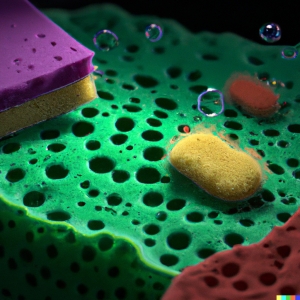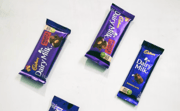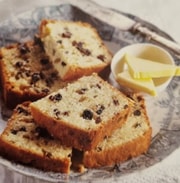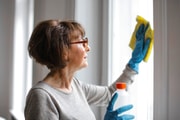SDC Rewards Member
Upgrade yours now
5 commonplace items that could be dirtier than your toilet bowl (and how to clean them)
We all know that toilets aren't the cleanest places around, with all sorts of bacteria lurking in the bowl. But there are plenty of other common household items that are just as dirty, if not dirtier, than your toilet. Here are five of them:
1. The Kitchen Sink
Your kitchen sink is full of all sorts of bacteria, from food scraps and grease to dirt and grime. And if you don't clean it regularly, the bacteria can build up and cause all sorts of problems.
'There’s more E. coli in a kitchen sink than in a toilet after you flush it. The sink is a great place for E. coli to live and grow since it’s wet and moist. Bacteria feed on the food that people put down the drain and what’s left on dishes in the sink. That’s probably why dogs drink out of the toilet—because there’s less E. coli in it,' says Dr Charles Gerba, a Microbiologist and Professor at the University of Arizona.
How to clean:
To clean your kitchen sink, start by scrubbing it with a disinfectant or bleach solution. Then rinse it well with hot water and dry it with a clean cloth. Make sure to clean under the rim of the sink, too.
2. Dish Sponges
Dish sponges are another common household item that's full of bacteria. In fact, in one German study, scientists found 362 different species of bacteria in sponges and 45 billion bacteria per square centimetre. That means part of your kitchen sponge could have as much bacteria as the inside of a toilet. Gross. The USDA recommends that you try to clean your sponges daily, but even that is not a perfect solution.
How to clean:
The best way to clean your sponges is in the dishwasher or the microwave. Before you do so make sure you read the label and don’t put any metallic sponges or certain synthetic sponges in the microwave because they will catch on fire. If you do choose to microwave your sponge, make sure it is damp because a dry sponge is also highly flammable. If you choose to throw your sponge in the dishwasher, make sure it is on a high-heat setting to ensure the bacteria in your sponge are killed.
3. The Remote Control
We use our remote controls dozens of times every day to change TV channels, adjust the volume or skip to the next song – but how often do we think about cleaning them? If everyone in your house washed their hands completely each time before touching them, it wouldn't be an issue... but we all know that's not realistic!
That means remote controls attract bacteria pretty easily. And if someone in your family is ill, there are even more germs just waiting to infect anyone who uses them next. Yuck!
How to clean:
Use a disinfectant wipe that is approved for use on electronics each day to give the remote a quick once-over. If someone is sick at home, take extra care to wipe down after every use before passing it along for anyone else to touch. You should also regularly wash any removable covers according to their care instructions (usually just throwing them into the washing machine on a delicate cycle will do).
4. The cutting board
Your cutting board is a prime breeding ground for bacteria, especially if you use it to cut meat (raw meat can leave traces of salmonella and campylobacter). The essential item is up to 200 times dirtier than a toilet seat with a whopping average bacteria count of 24,250 per square cm, according to a 2017 article from News.com.au.
How to clean:
‘Disinfecting is key when you are cleaning your kitchen, especially your chopping board. A dishwasher disinfects with heat but if you don’t have one use a readily available, food-safe, antibacterial cleanser and spray it onto the board. Allow it to soak for around five minutes and then rinse with running water and dry with a paper towel — not a dirty tea towel.’
5. Mobile Phones
According to a piece by Time Magazine, your mobile phone is 10 times dirtier than a toilet seat.
‘Because people are always carrying their cell phones even in situations where they would normally wash their hands before doing anything, cell phones do tend to get pretty gross,’ notes Emily Martin, Assistant Professor of Epidemiology at the University of Michigan School of Public Health. Research has varied on just how many germs are crawling on the average cell phone, but a recent study found more than 17,000 bacterial gene copies on the phones of high school students.
How to clean:
To clean your phone, use a disinfectant wipe or alcohol-based cleaner. Avoid using harsh chemicals like bleach, as these can damage your phone's screen.
So what do you think, members? We hope this doesn't turn anyone into germaphobes, but it is important to be aware of the potential for bacteria in common household items. Be sure to clean them regularly, and take extra care if someone in your home is sick.
Did we miss anything? Let us know!






